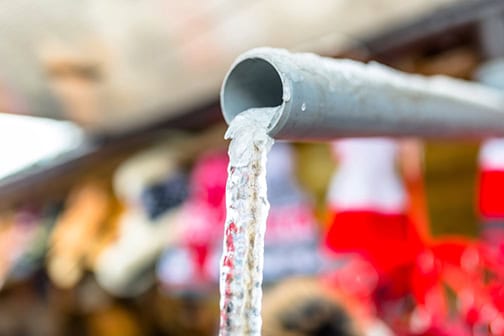What to Do if Your Pipes Are Frozen
As winter’s icy grip tightens, homeowners face numerous challenges, but few are as potentially devastating as frozen pipes. Frozen pipes pose a significant threat to your home’s integrity and your wallet. When water freezes, it expands, putting immense pressure on the pipes containing it.

This pressure can cause pipes to crack or burst, leading to extensive water damage, mold growth, and structural issues. The repair costs can quickly escalate into thousands of dollars, not to mention the inconvenience and potential displacement while repairs are underway. If you’ve ever wondered what to do if your pipes are frozen, you’re not alone.
Quality Plumbing has a comprehensive guide of what to do if your pipes are frozen to walk you through the dangers, identification, immediate steps, and more. When you need quick and expert plumbing solutions to restore your home’s plumbing and peace of mind, contact Quality Plumbing.
What to Do if Your Pipes Are Frozen: The Signs of a Frozen Pipe
Before you look into what to do if your pipes are frozen, it is important first to be able to identify the signs of a frozen pipe so you know when to seek professional help. Some of the most common indicators that you have a frozen pipe are:
- No water flow or reduced flow from faucets
- Frost on exposed pipes
- Stranger odors coming from drains or faucets
- Unusual sounds when you turn on taps, such as whistling or banging
- Bulging or frost-covered sections of pipes
Certain areas of your home are more susceptible to pipe freezing. Be especially vigilant about pipes in your exterior walls, unheated areas like basements, attics, and crawl spaces, under kitchen and bathroom cabinets, and near windows or poorly insulated areas.
What to Do if Your Pipes Are Frozen: What Steps to Take

If you suspect you have a frozen pipe, it’s crucial to act quickly. Time is of the essence when dealing with frozen pipes. The longer a pipe remains frozen, the higher the risk of it bursting. Swift action can mean the difference between a minor inconvenience and a major home disaster. Do the following if you suspect your pipes are frozen:
- Shut Off the Main Water Supply: Locate your home’s main water shut-off valve and turn it off immediately. This step is critical in preventing water damage if the pipe has already burst or does so during the thawing process.
- Open Faucets Connected to the Frozen Pipe: Open both the hot and cold handles on the faucet served by the frozen pipe. This relieves pressure in the system and allows water to flow freely once thawing begins.
- Begin Thawing Process: Once you’ve taken these precautionary measures, you can start the thawing process. Remember, never use an open flame to thaw pipes, as this can cause damage to the pipes or even start a fire. Some DIY thawing methods include hair drying, applying hot towels, and using a space heater or electrical heating tape.
While thawing pipes, there are many things to consider to ensure your safety, such as keeping an eye out for bulging or deformed sections of pipe and dealing with potential leaks as the pipe thaws. If you’re uncomfortable with the DIY methods, can’t locate the frozen section, or suspect the pipe has already burst, it’s time to call the professionals at Quality Plumbing. Our experts are available 24/7 to handle your frozen pipe emergencies efficiently and effectively.
What to Do if Your Pipes Are Frozen: Prevention Tips
An ounce of prevention is worth a pound of cure, especially when it comes to frozen pipes. To prevent future freezes, consider implementing effective insulation techniques. Wrap exposed pipes with foam pipe insulation or heat tape, particularly in unheated areas of your home. Ensure your walls are properly insulated, especially those containing plumbing. Caulk any cracks or holes in your walls, especially near pipes, to prevent cold air from entering.
Maintaining a consistent indoor temperature is important. Keep your thermostat set to at least 55°F, even when you’re away from home. Open cabinet doors under sinks to allow warm air to circulate around the pipes, and if you have a basement, keep it heated.
During severe cold snaps, allow faucets to drip slightly, as moving water is less likely to freeze than standing water. By implementing these strategies, you can significantly reduce the risk of frozen pipes and protect your home from potential water damage.

Contact Quality Plumbing for Expert Plumbing Solutions
When it comes to frozen pipes, prompt action is crucial. Quality Plumbing does more than inform you what to do if your pipes are frozen; we also offer quick and expert plumbing solutions to remedy the issue as soon as possible to protect your home and restore your peace of mind.
When you need the best in plumbing, look no further than Quality Plumbing. Discover why we’re the trusted choice for all your plumbing needs.

